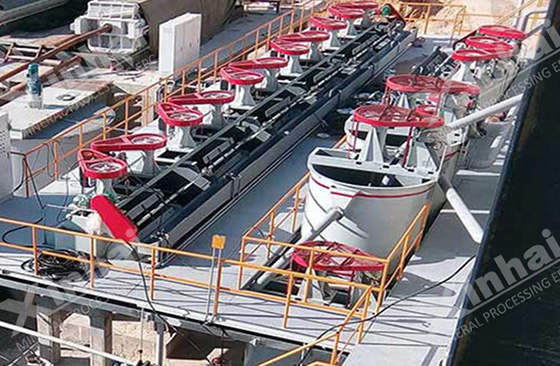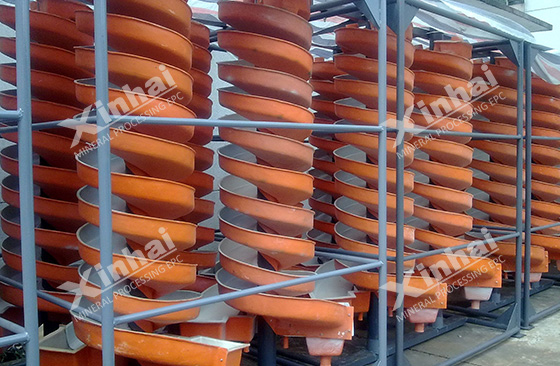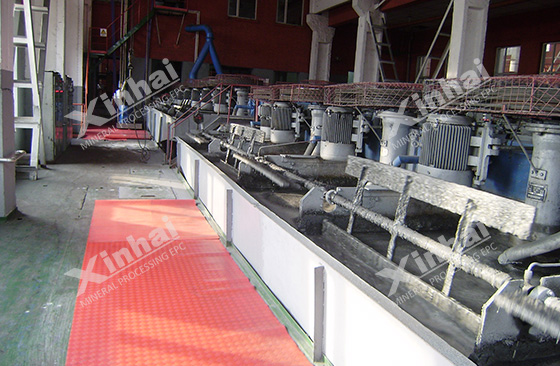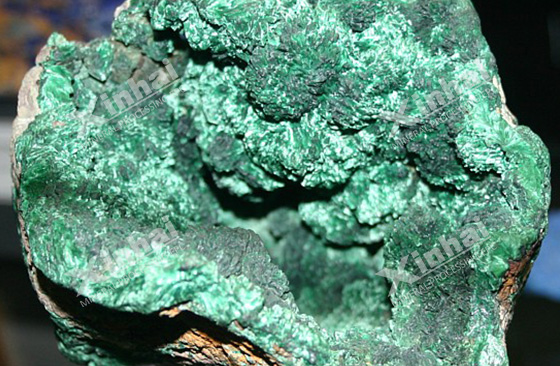Oxide copper ore resources include copper sulfide minerals with oxidation zones in most deposits and a large number of independent oxidized copper deposits. Oxidized copper ore and mixed copper ore account for a quarter of the copper ore with industrial mining value. With the continuous development and utilization of high-grade sulfide copper ore resources, the number is reduced, and the development of oxidized copper ore has gradually received high attention, especially the development and utilization of refractory oxidized copper ore, which has become the focus of mining and metallurgical science and technology. The following will briefly introduce the main types and beneficiation processes of refractory oxide copper ore.

Use the table of contents below to navigate through the guide:
01Malachite-type oxide copper ore
The main mineral of this type of oxide copper ore is chrysocolla, followed by some combined copper ores (mainly including malachite, azurite, ferrocopper ore, cuprite, etc.), copper-bearing halloysite and a small amount of secondary sulfides. Chrysocolla is a difficult-to-select oxidized copper ore, which is mostly short veins or lumps dispersed in the rock. It is generally treated by separation-flotation method or chemical beneficiation method.
02Cuprite-type oxide copper ore
This type of ore is mainly composed of cuprite and malachite, with relatively less content of other oxidized copper minerals and low content of secondary sulfides. This type of oxide copper ore often appears in the form of agglomerates and impregnation. For this type of ore, flotation is usually used as the main mineral processing technology. In addition, according to the characteristics of the ore, appropriate pretreatment, such as magnetic separation or gravity separation, may be required to improve the effect of the flotation process.

03Alumina-type oxide copper ore
This type of ore is mainly composed of copper alum as the main mineral, usually filled in the leaching holes and cracks in the form of hair-like, needle-like and sand-like aggregates. Some of them are also accumulated with ore mud in the form of sugar particles. The ore grade is relatively high. This type of mineral contains gangue minerals such as silicate minerals, limonite and carbonate minerals. For this type of oxide copper ore, acid leaching or ammonia leaching is usually used for treatment. In order to improve the recovery rate, it is sometimes necessary to combine sedimentation separation, filtration and other technologies to treat gangue minerals and other impurities in the ore.
04Combined oxide copper ore
The main ore of this type of oxide copper ore is combined copper ore or copper-bearing kaolinite, in which the copper mineral particles are extremely fine and are evenly distributed in limonite or mud. This type of ore occupies a certain proportion in most oxidized ore bodies. When the gangue mineral is silicate, this type of ore is a difficult-to-select ore, and when the gangue mineral is carbonate, this type of ore is a complex and difficult-to-select ore. In actual production, chemical beneficiation and separation-flotation methods are often used to process it.

05Mixed Oxide Copper Ore
This type of oxide copper ore is a mixture of refractory and easy-to-select minerals. The refractory minerals include chrysocolla, alum, and combined copper, while the easy-to-select minerals include malachite, azurite, and cuprite. When the gangue minerals are silicates and limonites, this type of ore is a refractory oxidized copper ore. If the gangue minerals are carbonates, this type of ore is a complex refractory oxidized copper ore. The concentrator uses chemical beneficiation-flotation, ammonia leaching-extraction-electrodeposition, and separation-flotation to treat this type of oxidized copper ore.
06Oxidation-sulfide mineral mixed ore
Oxidation-sulfide mineral mixed ore contains oxides and sulfides, with complex composition and coarse particle size, and is a difficult-to-select oxide copper ore. Malachite, cuprite, azurite and some combined copper ores are oxide minerals, while chalcocite, blue chalcocite, bornite, covellite, etc. are sulfide minerals. A multi-stage treatment method is usually used to treat this ore. First, flotation is used to separate copper sulfide minerals and copper oxide minerals. Then, the copper oxide minerals are acid-leached to obtain copper, and then the copper sulfide minerals are further extracted by reduction or other chemical methods.

The above is a summary of the types of oxide copper ore and an introduction to their commonly used treatment methods. When treating copper oxide ores, direct flotation and sulfide flotation are often used. Direct flotation mainly treats copper oxide ores with relatively simple mineral composition and uncomplicated properties. Sulfide flotation requires the copper oxide to be sulfided before flotation. For complex copper oxide ores with fine particle size, low grade and severe mud, chemical beneficiation and beneficiation-metallurgy combined processes are often used for treatment. The selection and formulation of specific copper ore beneficiation methods need to be based on the characteristics of the ore itself, which can improve the recovery rate of concentrate and reduce production costs.


 marketing@ytxinhai.com
marketing@ytxinhai.com  0086 13810327080
0086 13810327080 






































































































 CHAT
CHAT MESSAGE
MESSAGE




